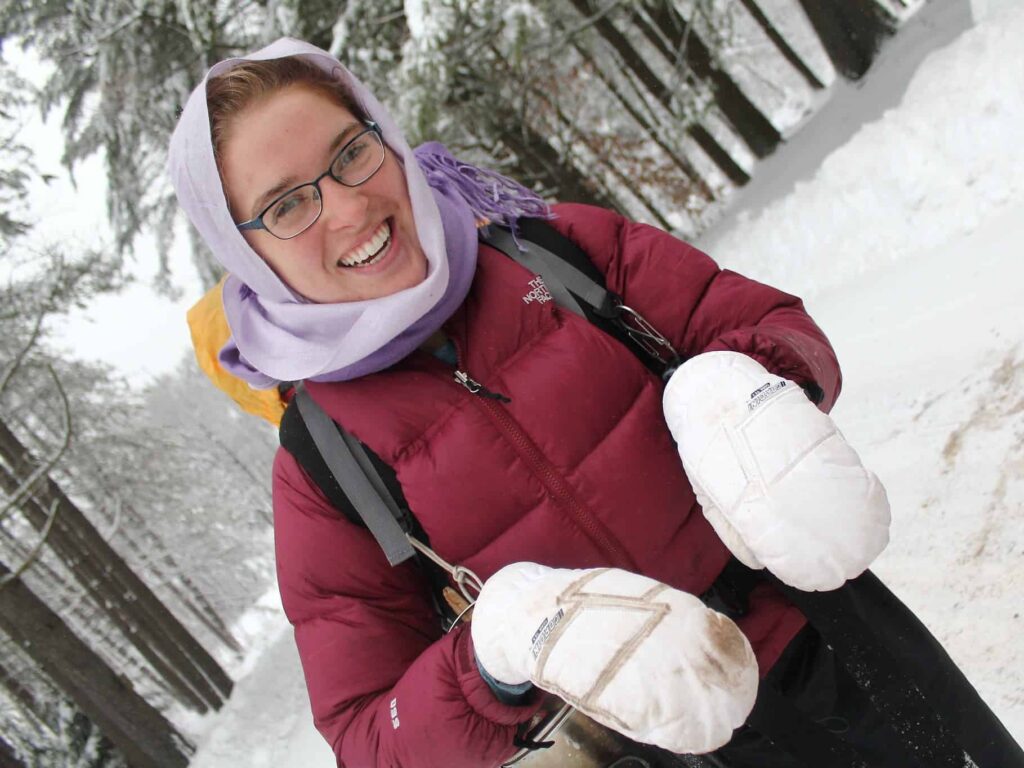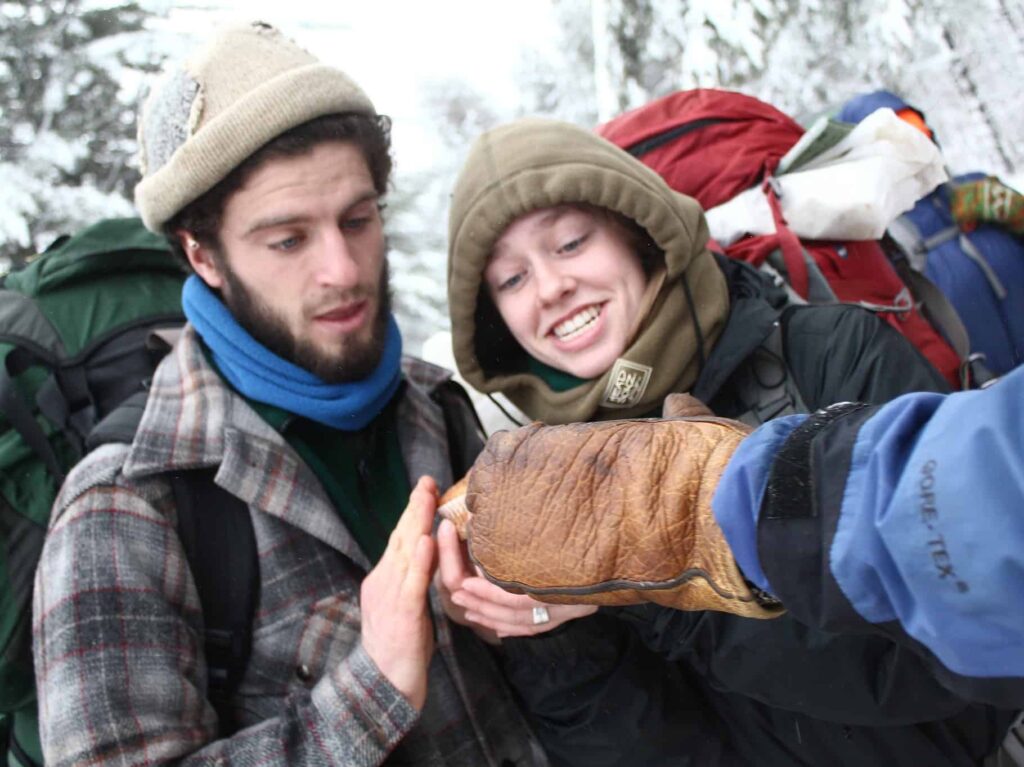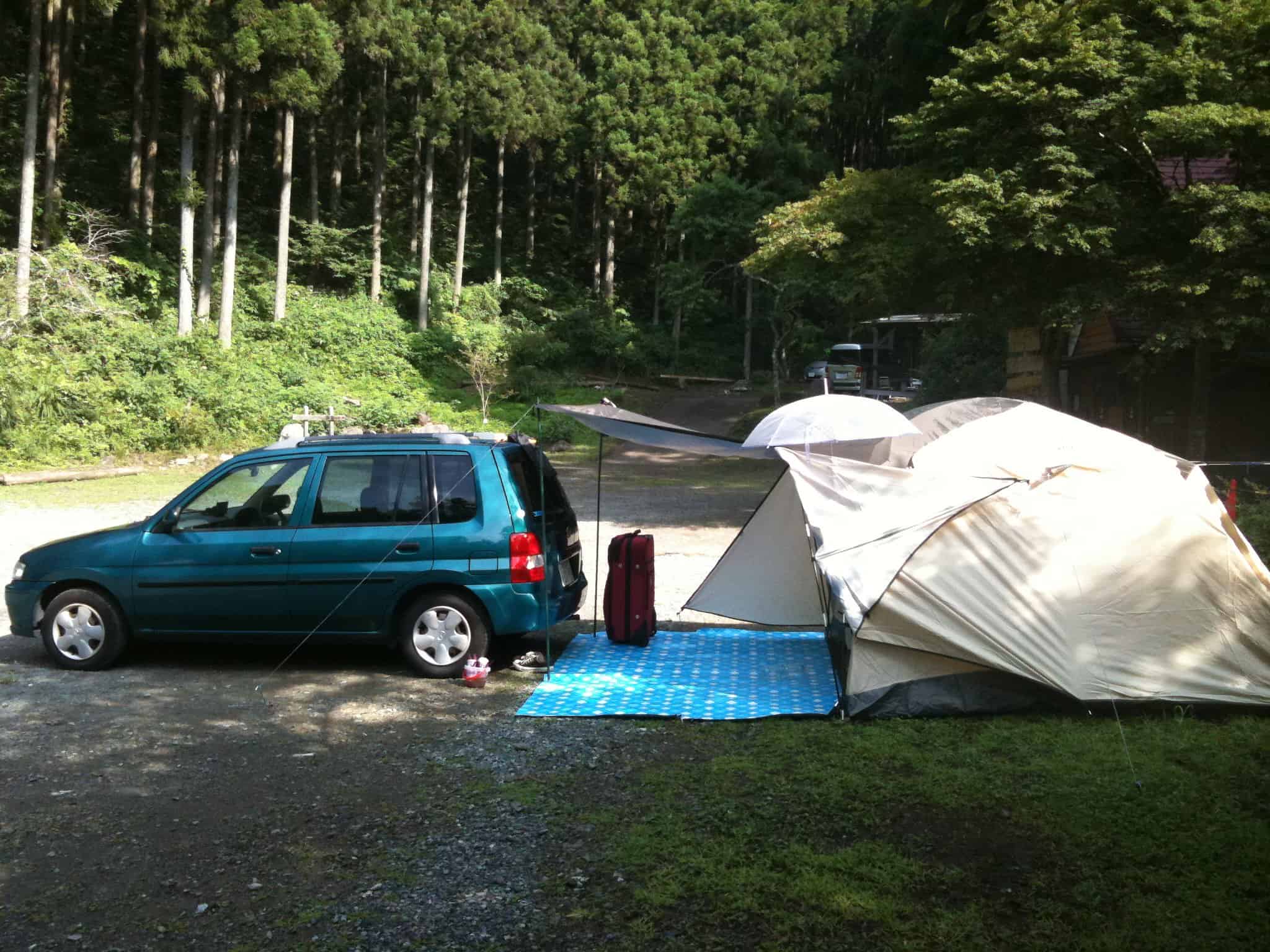Last updated on January 18th, 2023 at 06:22 pm
If you’ve ever experienced a night of shivering in your bag while camping, you’ve probably dreamed of ways to heat your tent. Of course, staying warm overnight while camping is more than just a luxury: it’s also crucial for survival in below freezing temperatures. This is why we’re diving into how to heat a tent while car camping.
The best heating options for tents include space heaters, ideal sleeping bags, and more ways to warm your tent during winter camping.
1. Electric Space Heater
With a few safety precautions, electric space heaters can be an ideal way to quickly warm your tent. Because these heaters use electricity, it will be necessary to either find a campsite with plugins, or utilize your car’s battery.
To use your car’s battery as an outlet takes a bit of adjustment and a quality power station. Car batteries run on DC current, while space heaters run on AC, so you will need an inverter.
Once the space heater is connected to an inverter like this one you will be heating your tent in no time. Additionally, we’ve had great trips off this power station.
Generally, your car battery can power an electric space heater for roughly 3.5 hours.
However, keep in mind that this can put a lot of stress on your battery, so you ideally don’t want to run the heater for 3.5 hours straight.
As an alternative, electric blankets or heating pads are also an option. As cited aboev, power converters are available that convert your 12V cigarette lighter port to a standard outlet in which you can plug blankets and pads in to. However, unless you’re truck camping, your going to need some extension cords, which pose a serious risk of fire.
Again, electric options can be hard on your car’s battery, so it’s best to use them to warm your tent or blanket before sleeping, then give them a rest.
Finally, for safety’s sake, heaters should not be left on overnight while you’re sleeping. So, be sure to unplug the heater and connections.

2. Propane Heater
Propane heaters are another option for heating your tent, especially if your car battery isn’t an option.
Despite past safety concerns, propane heaters are a safe option for campers provided important safety precautions are taken.
Many safety concerns are due to carbon monoxide, the odorless gas given off by heaters as a byproduct of propane.
Carbon monoxide is highly toxic; however, most modern propane heaters are carbon monoxide safe, since catalytic heaters don’t give off gas. Plus, most also turn off when tipped over for safety.
Having said this, there are still a few mandatory safety protocols to take:
- Propane heaters should only be used with a 3-season or less tent. This is because the insulated design of 4-season tents may trap any errant vapors, including carbon monoxide.
- A ventilation window should always be open, just in case.
- Always be sure to turn your heater off before sleeping.
- Portable propane heaters should only be considered if they feature a cage over the heat element for safety.
Signs of Carbon Monoxide Poisoning
Unfortunately, carbon monoxide poisoning has been a very real safety hazard when using any propane heaters. And, while many indoor-safe heaters are safe for tent use, itt must be stated while learning how to heat a tent while car camping.
Carbon monoxide is a colorless, odorless gas given off as a byproduct of propane burning, and can be deadly (source).
As we mentioned earlier, many modern propane heaters are carbon monoxide safe. However, the risk of poisoning is still a possibility.
Carbon monoxide poisoning is serious and often sneaks up on people. However, there are several symptoms to watch for when worried:
- Dull headache
- Dizziness, blurred vision
- Weakness, fatigue
- Nausea, vomiting
- Chest pain
- Confusion
- “Flu-like” symptoms
- Loss of consciousness
Importantly, heaters not rated for indoor use should not under, any circumstances, be used for camping. And also remember that ventilation is key if you’re using any heater: keep a window cracked in your tent.
3. Candle Lanterns
In addition, candle lanterns like this one have traditionally been used for lighting, but they also give off a decent amount of heat. If you have a small tent, they can produce ample heat for up to 9 hours.
Plus, candle lanterns are protected within glass for safety, granting peace of mind when moving it around.
Like all heaters, however, be sure to still extinguish the flame while sleeping, and keep your tent ventilated.
4. Portable Battery Heaters
Portable battery heaters are also an option for warming your tent. They tend to be more expensive, and like electric heaters, need a quality power station to provide heat throughout the night.
Generally, these do not provide as much heat as a propane heater. So, battery-powered heaters are best when used for small tents.

5. Focus on Retaining Heat
Often, a huge aspect of keeping warm during camping is retaining heat, rather than adding outer heat. This boils down to having good insulation.
When talking about how to heat a tent while car camping, investments in better gear must be investigated. Investing in the following items designed to keep heat in overnight can save you on having to rely on external heat sources.
Sub-zero sleeping bag
A high-quality sleeping bag designed for the temperatures you’ll be camping in is a must for keeping warm.
For instance, sleeping bags list their temperature range, and choosing one built for sub-freezing temperatures will make your experience comfortable.
Furthermore, I buy based on the ‘comfort rating,’ since I run really cold.
In fact, sub-zero rated bags are dense, doubly-insulated and retain body heat. As a result, campers may not even need an external heater.
4- season tent
Additionally, along with your sleeping bag, you should also choose a tent built for insulation.
Tents are generally classified by season. You’ve likely noticed “3-season” and “4-season” tents.
For instance, 3-season tents will keep you comfortable during Spring, Summer, and Fall temperatures.
Additionally, they are lightweight and designed to keep you dry and relatively warm. However, 3-season tents are too cold for winter temperatures.
Furthermore, for freezing temperatures, snow, and wind you’ll need a 4-season tent.
Their walls are often mesh-free to trap in more heat, and feature longer rainflies to block wind. Plus, they are usually sturdier to handle wind and a heavy snow load.
Investing in a 4-season tent can help keep heat inside your tent and cold out. Paired with a sub-zero sleeping bag, you have a high chance of staying warm throughout the night without an additional heat source.
Sleeping bag liner
Sleeping bag liners are a lesser-known way of adding warming capabilities to your sleeping bag.
In general, a liner can add anywhere from 5°F to 20°F.
If you find your sleeping bag isn’t cutting it in cold temperatures, or if you only have one bag for all seasons, consider a liner for winter.
Additionally, take a look at our How to Increase Sleeping Bag Warmth post for more tips.
Closed-cell sleep mattress
An often overlooked way your body loses heat is by sleeping on the cold ground.
Investing in a sleeping mat can help insulate your body from the earth.
And “closed-cell” sleeping pads are the best at insulation. For instance, these dense foam pads filled with tiny closed air cells trap heat.
Plus, reflective layers to reflect body heat back toward your body.
Dress in Warm Layers
Finally, possibly the most obvious solution to warmth and ‘how to heat a tent while car camping’ is to bundle up in layers to retain warmth. We usually choose fleece lined leggings plus soft shell pants with several synthetic thermal shirts and a fleece jacket.
In fact, check out our post Top 5 Best Fleece Jackets for Winter Camping where we delve into the best options for cold weather camping.

6. How to Heat Tent Without Electricity
If you don’t have access to electricity, don’t panic. for instance, there are several heating options used by campers for generations.
These include:
- Large hot rocks (avoid heating wet river rocks, which can explode)
- Heated water in bottles
- Hot water bottles
- Battery-operated portable heaters
- Candle lanterns
Tuck warm rocks inside your tent to capture their radiant heat, and add hot water bottles to your sleeping bag for the same.
Additionally, don’t get caught in the dark, check out our post on 7 Headlamps Perfect for Hiking in the Dark, which are great for working around camp.

Sleep Better in the Cold
Camping in cold temperatures can be a daunting task. And learning how to heat a tent while car camping can not only boost morale, but keep you safe from hypothermia.
However, with the right tools such as portable heaters, quality sleeping bags, and the appropriate tent, you have nothing to fear. Plus, you don’t even necessarily need to utilize your car’s battery. So, try out these heating ideas to warm up your tent safely and effectively during your next winter car camp.
About the Author
Sarah Sampsell
Title Image Credit, How to Heat a Tent While Car Camping: Mr. Brian | (source) | Attribution 2.0 Generic (CC BY 2.0) — reduced file size and image
How to Heat a Tent While Car Camping, Image Credit 1: Jimmy Stone If Can’t? | (source) | Attribution 2.0 Generic (CC BY 2.0) — reduced file size and image
How to Heat a Tent While Car Camping, Image Credit 2: Sterling College | (source) | Attribution 2.0 Generic (CC BY 2.0) — reduced file size and image
Image Credit 3, How to Heat a Tent While Car Camping: Tim Regan | (source) | Attribution 2.0 Generic (CC BY 2.0) — reduced file size and image
Image Credit 4, How to Heat a Tent While Car Camping: Sterling College | (source) | Attribution 2.0 Generic (CC BY 2.0) — reduced file size and image

